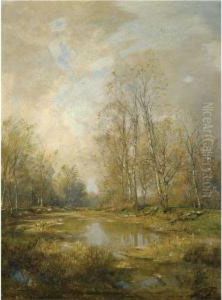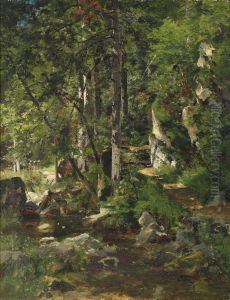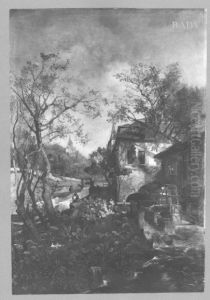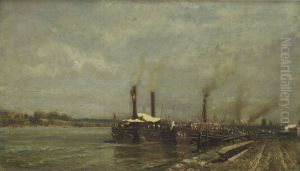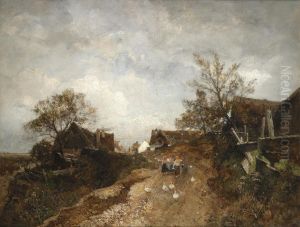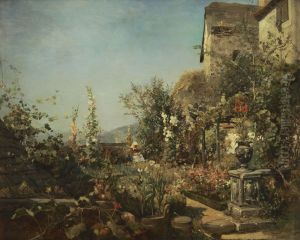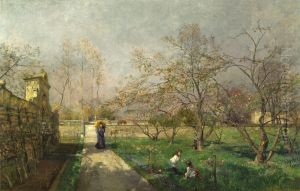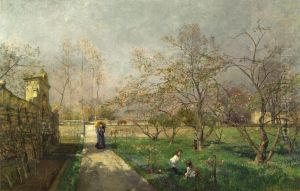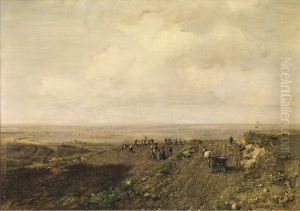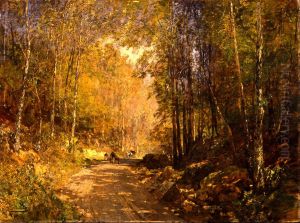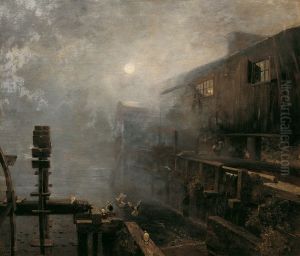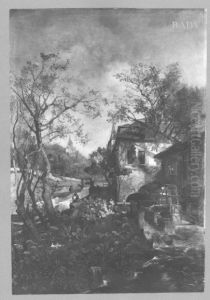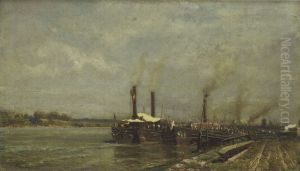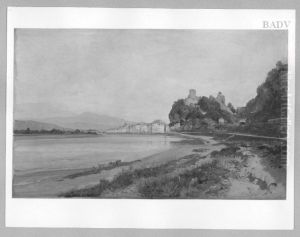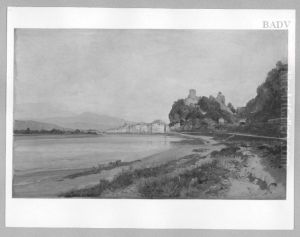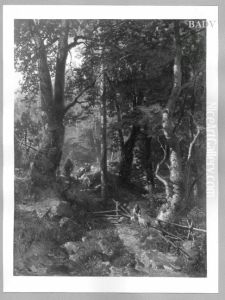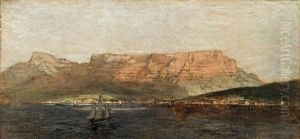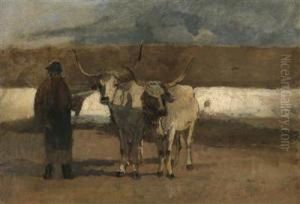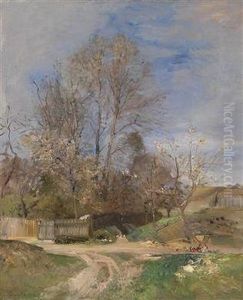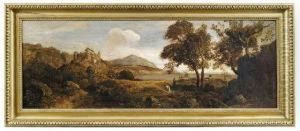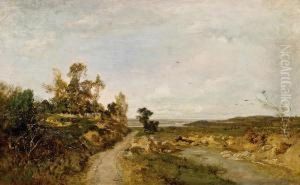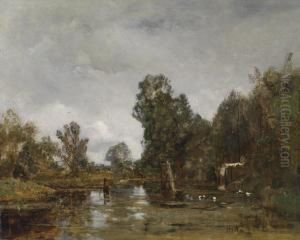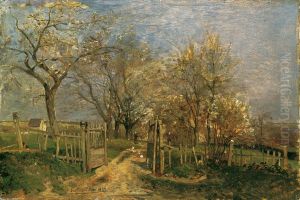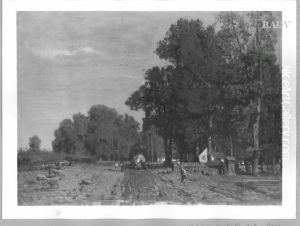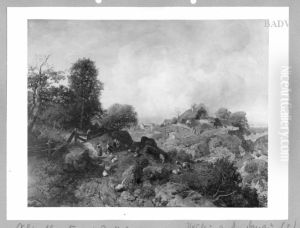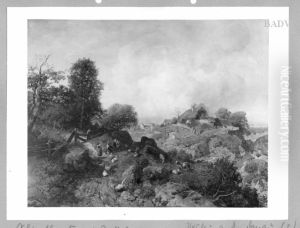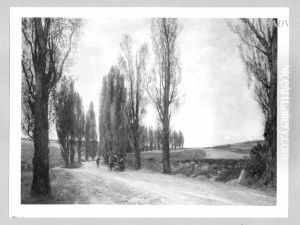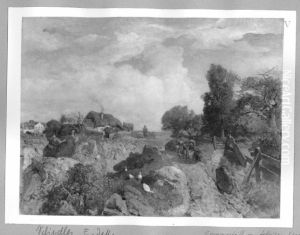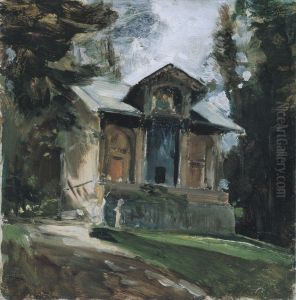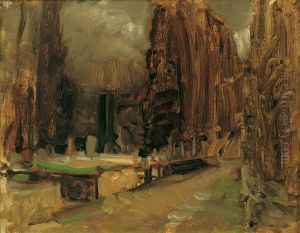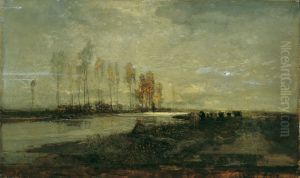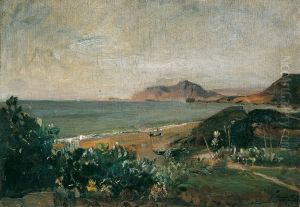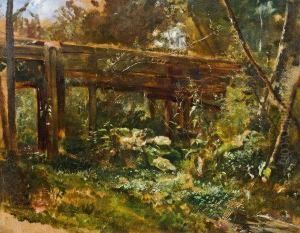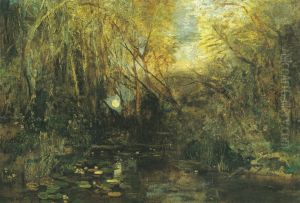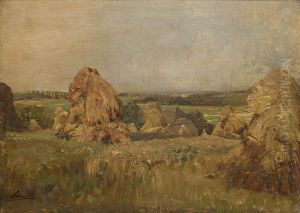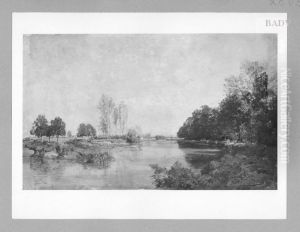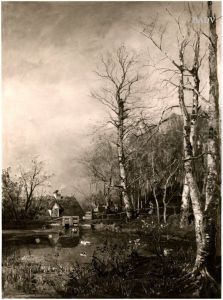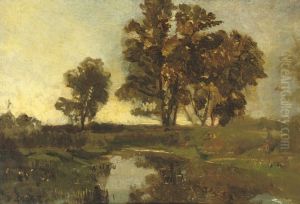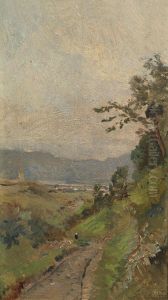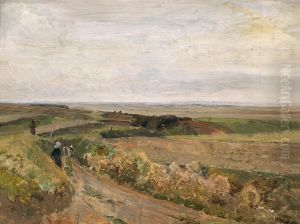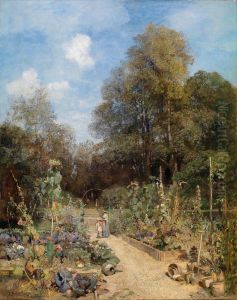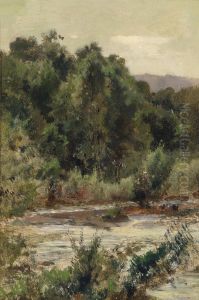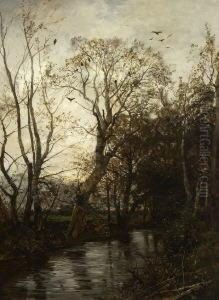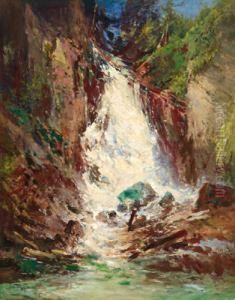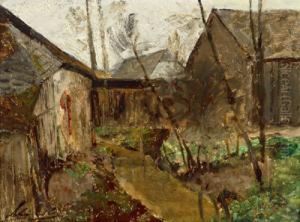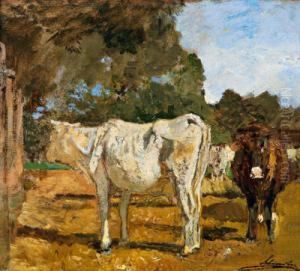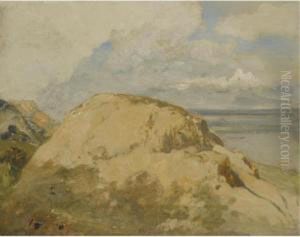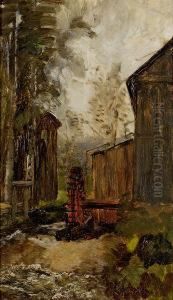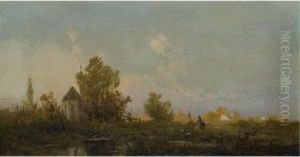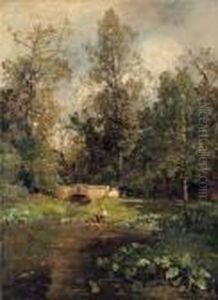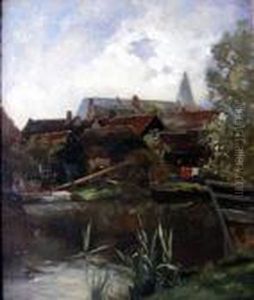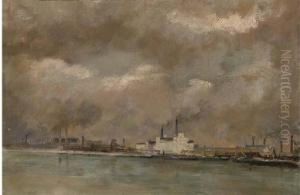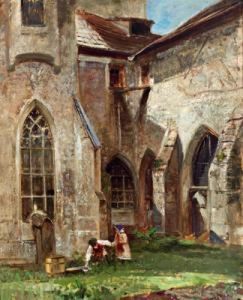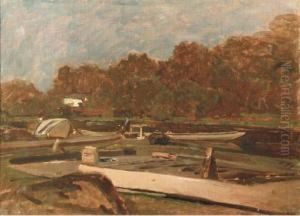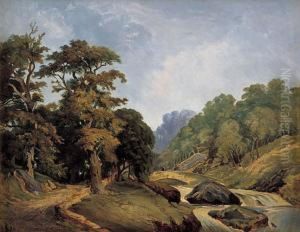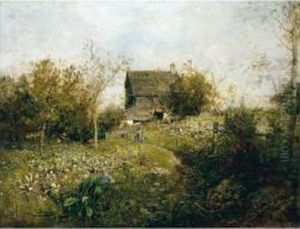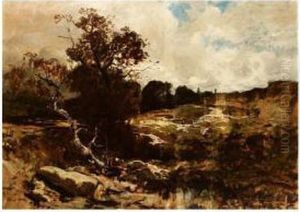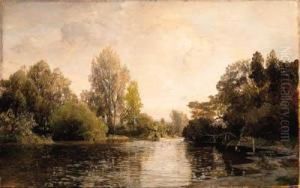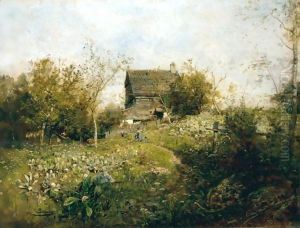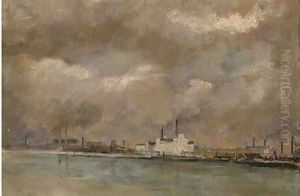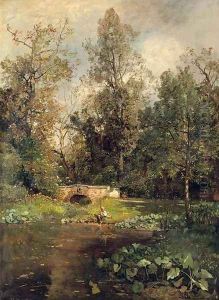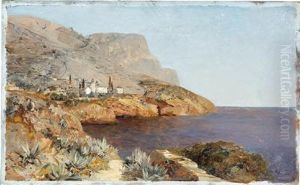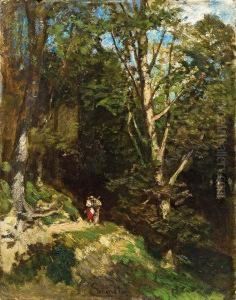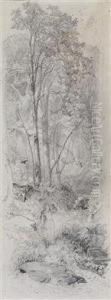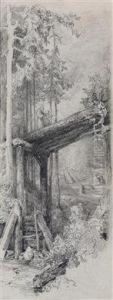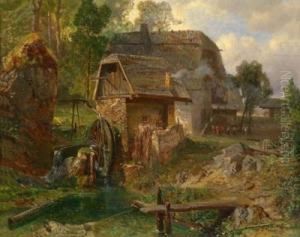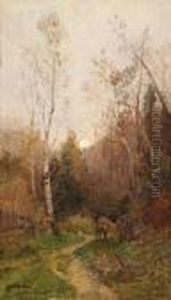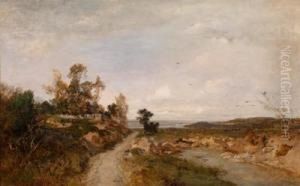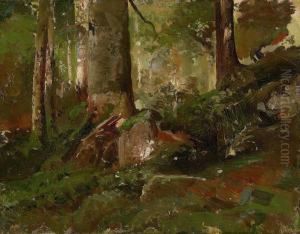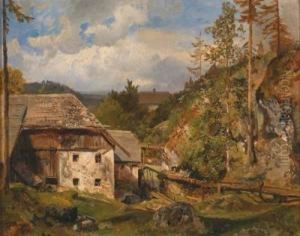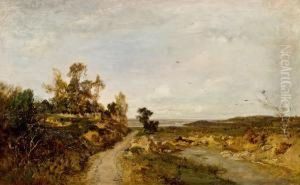Emil Jakob Schindler Paintings
Emil Jakob Schindler was a prominent Austrian landscape painter, born on April 27, 1842, in Vienna, Austria. He is often associated with the Stimmungsimpressionismus movement, a form of mood impressionism that emphasizes the atmospheric and light conditions of landscapes. Schindler's father was a locksmith, and his family was not particularly wealthy, which made his early years in the pursuit of art somewhat challenging. Despite these obstacles, he demonstrated a keen interest and talent in painting from a young age.
Schindler initially trained at the Vienna Commercial Academy but soon switched to studying art. He enrolled at the Academy of Fine Arts Vienna in 1860 and studied under Albert Zimmermann, a well-known landscape painter of the time. Schindler's early works were influenced by the Romantic landscape tradition, but he gradually developed his unique style characterized by a subtle, nuanced approach to capturing light and atmosphere.
Throughout his career, Schindler traveled extensively across Europe, including stays in Italy, the Netherlands, Germany, and England, where he was influenced by the works of the Barbizon School and the Dutch landscape painters. His travels significantly impacted his painting style, as he began to incorporate the plein air painting technique, working outdoors to capture the transient effects of light on the landscape.
Schindler became a central figure in the Austrian art scene, playing a significant role in the development of landscape painting in his country. He was also a member of the Vienna Künstlerhaus, an association of artists. His work gained considerable recognition during his lifetime, and he was awarded numerous prizes, including the State Prize and the Golden Medal of Honor from the Emperor.
Emil Jakob Schindler's personal life was also of interest, as he was the father of Alma Mahler, who later became a notable composer and socialite, and married Gustav Mahler, the famous composer. Schindler's marriage to Anna Sofie Bergen, a singer, ended in 1881, and he later lived with Olga Wisinger-Florian, one of his students who also became a well-known painter.
Schindler's health began to decline in the early 1890s, and he died on August 9, 1892, in Westerland on the North Sea island of Sylt, where he had traveled hoping to recuperate. His death marked the loss of a key figure in the Austrian art world, and his works continue to be celebrated for their poetic and evocative depiction of nature. Schindler's paintings are held in the collections of major museums across Austria and beyond, ensuring his enduring legacy in the history of art.
